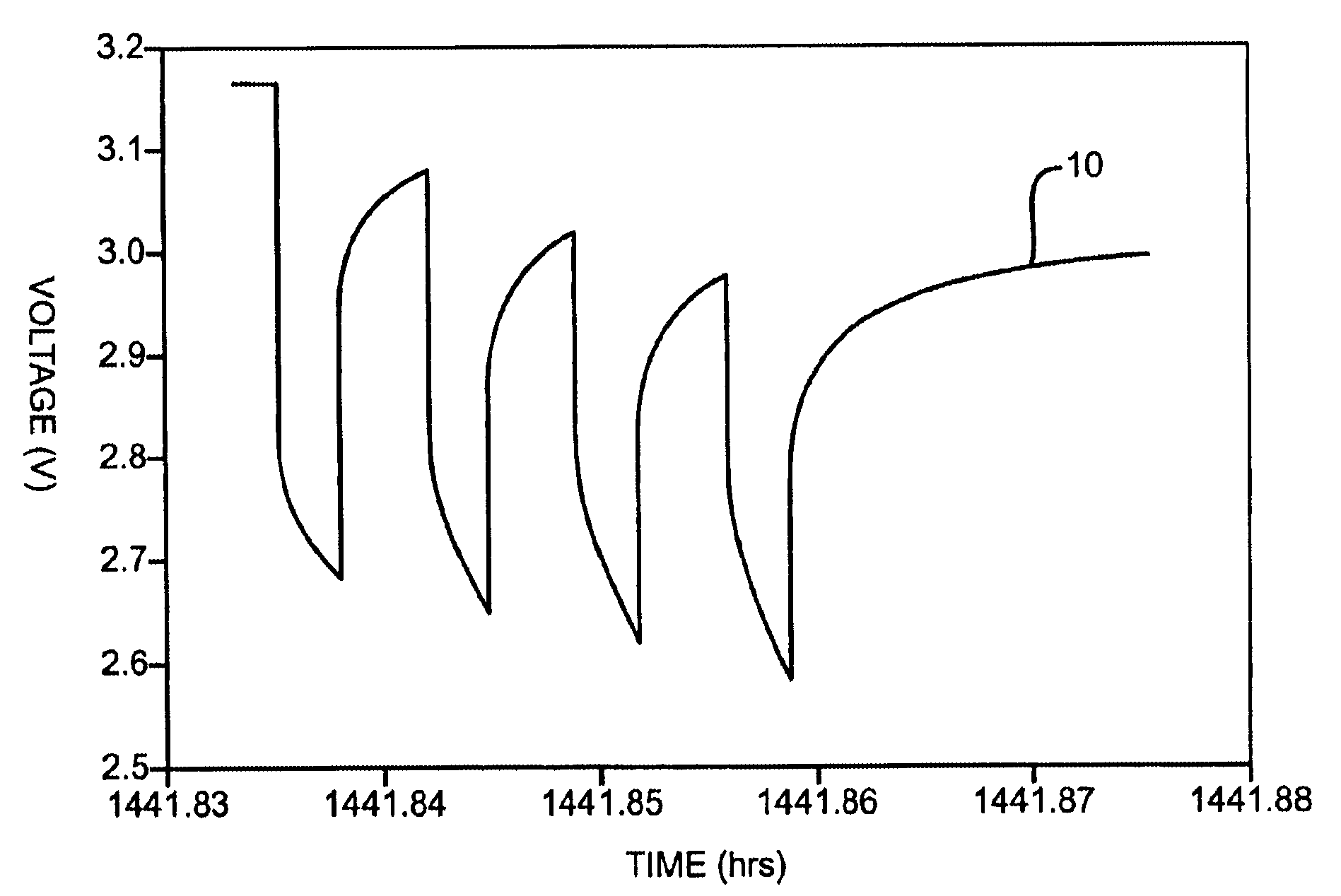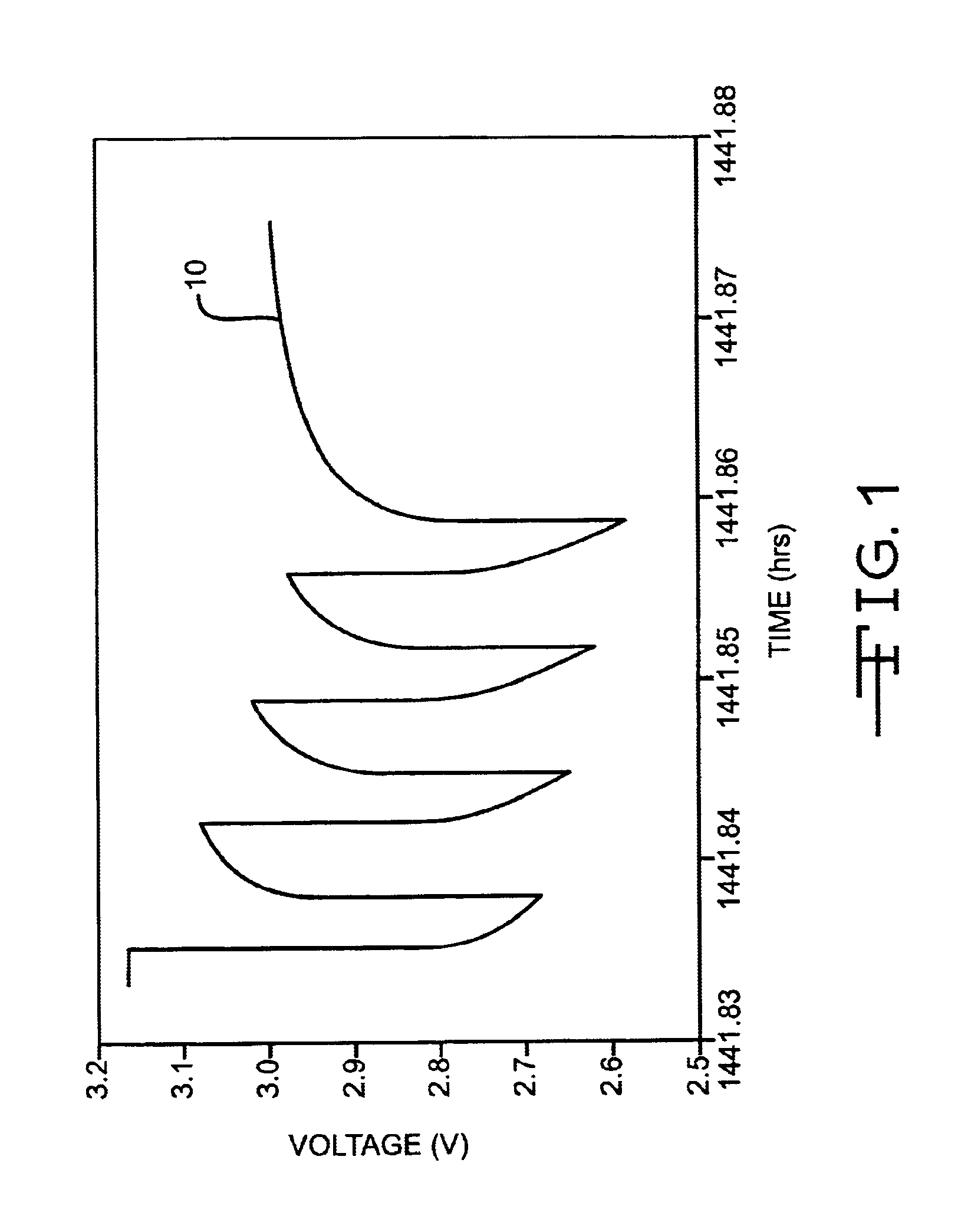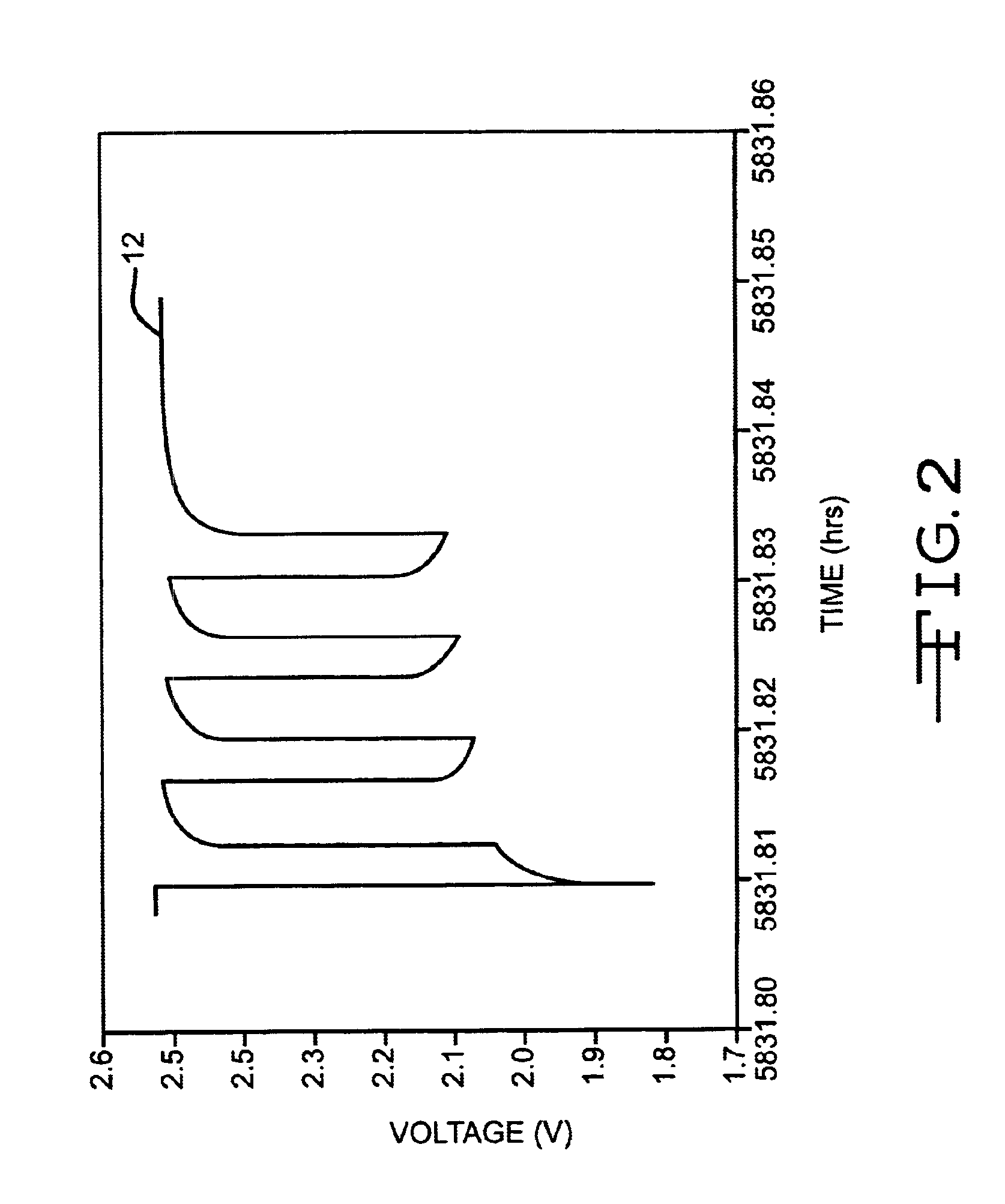Discharge methodologies for optimizing the performance of lithium/silver vanadium oxide cells
a technology of lithium vanadium oxide and discharge voltage, which is applied in the field of conversion of alkali metal electrochemical cells, can solve the problems of reducing discharge voltage, difficult to achieve second requirement, and unavoidable formation of passivating surface films for alkali metal, so as to improve the time to charge a capacitor, reduce the effect of discharge voltage and reduce the time of rdc growth
- Summary
- Abstract
- Description
- Claims
- Application Information
AI Technical Summary
Benefits of technology
Problems solved by technology
Method used
Image
Examples
example i
[0043]In order to more clearly define the DOD point of initiation of voltage delay and irreversible Rdc at the beginning of the second discharge region, twelve similarly constructed Li / SVO cells commercially available from Wilson Greatbatch Technologies, Inc., Clarence, N.Y. under model no. 8830 were placed on test using the same background current, pulse amplitude, and number of pulses per train (4) with varying times between pulse trains or pulse intervals (dT). The cells contained cathodes of pressed SVO powder made as described in the above referenced Keister et al. patents. The cells were discharged at 37° C. under a 100-kΩ load with superimposed pulse trains. The pulse trains consisted of four 2.0 amp (23.25 MA / cm2), 10-second pulses with 15 seconds rest between each pulse. The pulse trains were applied every about 30 days (cell group 1), about 60 days (cell group 2), about 120 days (cell group 3) and about 180 days (cell group 4). The discharge results are presented in FIG. 3...
example ii
[0050]A second test was conducted on model no. 9610 cells commercially available from Wilson Greatbatch Technologies, Inc. This test was similar to that performed in Example I except that the cells contained cathodes of freestanding SVO sheets made as described in the above referenced Takeuchi et al. patents. The cells were discharged at 37° C. under a 100-kΩ load with superimposed pulse trains. The pulse trains consisted of four 1.74 amps (23.19 mA / cm2), 10-second pulses with 15 seconds rest between each pulse. The pulse trains were applied every about 30 days (cell group 5), about 60 days (cell group 6), about 120 days (cell group 7) and about 180 days (cell group 8). The discharge results are presented in FIG. 4. Each group contained three cells.
[0051]In FIG. 4, curve 60 was constructed from the average background voltage of the cell group 5 and curve 62 was from the average pulse 2 minima of those cells. Curve 64 was constructed from the average background voltage of the cell gr...
PUM
| Property | Measurement | Unit |
|---|---|---|
| time | aaaaa | aaaaa |
| time | aaaaa | aaaaa |
| time | aaaaa | aaaaa |
Abstract
Description
Claims
Application Information
 Login to View More
Login to View More - R&D
- Intellectual Property
- Life Sciences
- Materials
- Tech Scout
- Unparalleled Data Quality
- Higher Quality Content
- 60% Fewer Hallucinations
Browse by: Latest US Patents, China's latest patents, Technical Efficacy Thesaurus, Application Domain, Technology Topic, Popular Technical Reports.
© 2025 PatSnap. All rights reserved.Legal|Privacy policy|Modern Slavery Act Transparency Statement|Sitemap|About US| Contact US: help@patsnap.com



